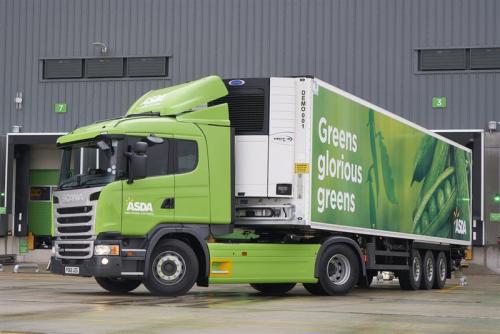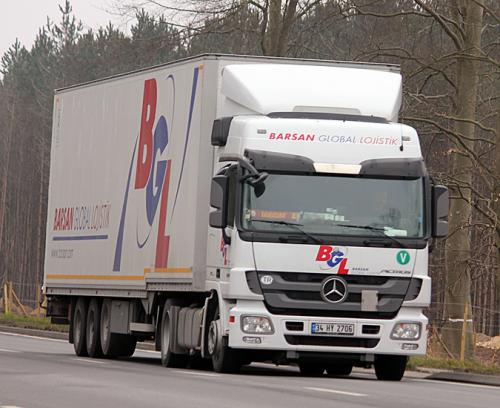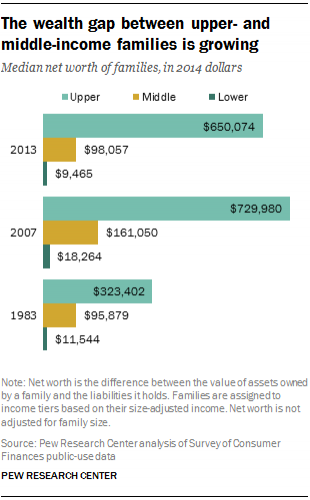
kscarbel2
Moderator-
Posts
18,717 -
Joined
-
Days Won
114
Content Type
Profiles
Forums
Gallery
Events
Blogs
BMT Wiki
Collections
Store
Everything posted by kscarbel2
-
Oil prices drop towards 11-year lows on worsening glut Reuters / December 14, 2015 Oil prices fell for a seventh straight session on Monday, coming close to 11-year lows, on growing fears that the global oil glut would worsen in the months to come in a pricing war between leading OPEC and non-OPEC producers. Brent crude LCOc1 fell by 3.4 percent to below $36.70 a barrel for the first time since December 2008 and U.S. West Texas Intermediate (WTI) CLc1 sank 2.5 percent below $34.70 a barrel. Brent traded less than 50 cents above the lows last seen during the 2008 financial crisis of $36.20 a barrel. If Brent falls below that level, that will be its lowest since mid-2004, when talk of a commodity super-cycle was only beginning. WTI's financial crisis low was $32.40 in December 2008. "Oil is coming under pressure as the lack of OPEC cuts mean incessant oversupply continues," said Amrita Sen from Energy Aspects think tank. Both benchmarks have fallen every day since the Organization of the Petroleum Exporting Countries on Dec. 4 abandoned its output ceiling. In the past six sessions, they have shed more than 13 percent each. OPEC has been pumping near record levels since last year in an attempt to drive higher-cost producers such as U.S. shale firms out of the market. New supply is likely to hit the market early next year as OPEC member Iran ramps up production once sanctions are lifted as expected following the July agreement on its disputed nuclear programme. "All new production will be earmarked for exports," BMI Research said in a note. "In addition to volumes released from storage, Iran will be able to increase crude oil and condensates exports by a maximum of 700,000 b/d by end-2016," it said. Iran's crude oil exports are set to hit a six-month high in December as buyers ramp up purchases in expectation that sanctions against the country will be lifted early next year, according to an industry source with knowledge of tanker loading schedules. Iranian news agency Shana quoted on Monday manager director of Iran's Central Oil Fields Company, Salbali Karimi, as saying Iran's cost of production stood $1-$1.5 per barrel, in a clear indication it would ramp up output in any price scenario. Gulf producers and Russia have previously said they would not cut output even if prices fell to $20 per barrel. On Friday, the International Energy Agency (IEA) that the global supply glut was likely to deepen next year and put more pressure on prices. But it said it didn't believe the world would run out of storage capacity [EIA/] OPEC supply is likely to increase by 1 million bpd next year, Morgan Stanley analysts said in a research note Monday. "Almost the entirety of added supplies in 2016 will come from Iran, Iraq and Saudi," it said.
-
The Financial Times / December 14, 2015 Oil is close to surpassing the lows hit during the financial crisis amid increased expectations of a persistent oversupply in global crude. Brent crude dropped $1.60 to $36.33 a barrel — the lowest in seven years. The global benchmark dropped for its seventh consecutive trading session, edging closer to the December 2008 intraday low of $36.20 a barrel. If Brent falls below this, it will hit a level last seen in the middle of 2004. “The year is ending on an uncomfortable note. The smell of fear is back in the air,” said David Hufton at London-based broker PVM. The US market benchmark, West Texas Intermediate, sunk $1.09 to $34.53 a barrel — the lowest since February 2009. WTI traded at $32.40 a barrel in 2008. Oil prices have tumbled since the meeting of Opec ministers at the start of the month. Brent has plunged 17 per cent while WTI is down 16 per cent. Discord within the group on which members should make production cuts to shore up the price, led to the continuation of Opec’s existing policy to keep on pumping. In addition, the group scrapped its official production ceiling, taking away any support for the oil price. “The Opec meeting has removed any last hopes of a reprieve for oil and it has added another layer of downside sentiment to commodities in general. The dam has collapsed and prices are in free fall, with devastating consequences,” said Mr Hufton. Despite weakening production growth outside of Opec, members of the producers’ group have ramped up output in the face of lower oil prices. Iraq and Saudi Arabia have pumped at record levels this year, while oil market participants are eyeing additional barrels from Iran when sanctions linked to its nuclear programme are expected to be lifted next year. The International Energy Agency, the world’s leading energy forecaster, said oil stockpiles are expected to swell throughout next year, albeit at a slower pace than in 2015. “Gloom is nourishing gloom on the oil market,” said Carsten Fritsch at Commerzbank. The sell-off has taken on “ludicrous dimensions”, he added. A stronger dollar and money managers re-establishing their short positions were piling on the pressure, said Adam Longson, oil analyst at Morgan Stanley. “The outlook for prices appears grim,” he said.
-
Freightliner Trucks Press Release / December 11, 2015
-
NBC News / December 8, 2015 The Department of Homeland Security (DHS) has taken the lead role in the search for two Muslim Afghan airmen who have run away from Moody Air Force Base in Georgia where they were training and vanished. The two men, Mirwais Kohistani and Shirzad Rohullah, were part of a group of 23 from Afghanistan who have been at the base since February. Officials allege there is no evidence the AWOL Muslim Afghan airmen pose a threat [even though they don’t know why they disappeared]. “They’ve just gone missing. We’re not sure why,” said Air Force spokesman Ed Gulick. “It’s not the first time it’s happened so we just want to find them if we can,” said Gulick. "There is a well-coordinated process among federal agencies to locate the individuals as quickly as possible and return them accordingly to the proper authorities to manage their present situation," the Air Force said in a statement. [Only Henry Blake could get away with a line like that] The DHS has seized hours of surveillance video in connection with the disappearance of the Afghan men from Valdosta Regional Airport (30 miles from the Florida border), where the men rented a car. The missing Afghan nationals in Georgia are assigned to the 81st Fighter Squadron, which was re-activated in January and charged with training Afghan airmen. .
-
May I ask, are you interested in this CJ5 in particular, or any CJ5?
-
Reuters / December 9, 2015 An Illinois man pleaded guilty on Wednesday to plotting with his cousin, a National Guard member, to attack an Illinois military installation as part of a conspiracy to support ISIS. Jonas Edmonds was charged along with his cousin, Army National Guard Specialist Hasan Edmonds, of planning to carry out an armed attack on the military facility where Hasan Edmonds had been training in Joliet, 34 miles (55 km) southwest of Chicago. Jonas Edmonds pleaded guilty to conspiring to provide material support to a foreign terrorist organization and making a false statement to law enforcement on an offense related to terrorism. Edmonds faces up to 23 years in prison. Sentencing is scheduled on Jan. 27. Hasan Edmonds is expected to plead guilty on Monday. Jonas Edmonds has been detained in federal custody since his March 25 arrest. Hasan Edmonds was arrested at Chicago's Midway airport on March 25 as he tried to fly to Egypt. The plan was for Hasan to leave the United States and join ISIS fighters while Jonas carried out the attack. The cousins were arrested after discussing their plans with an undercover employee of the FBI. As a member of the Illinois National Guard since 2011, Hasan Edmonds reported to the Joliet base one weekend a month and performed two weeks of active duty training per year. He lived in Aurora, about 41 miles (66 km) southwest of Chicago. .
-
South Carolina seeks to execute man who murdered 5 children Reuters / December 9, 2015 Prosecutors plan to seek the death penalty against a South Carolina man who murdered his five children last year before driving their bodies across several states and dumping them in Alabama. Timothy Ray Jones Jr. faces murder charges in the September 2014 killings of his children, ages 1 though 8. On Wednesday, Eleventh Circuit Solicitor Donald Myers in Lexington County, South Carolina, told a judge he planned to seek the death sentence again Jones, 33. Jones was arrested in Mississippi on Sept. 6, 2014, after being stopped at a driver's license checkpoint. He confessed to killing his five children, ages 1 though 8, and led police to the bodies, which he had wrapped individually in trash bags and dumped in rural Alabama. Jones, who worked for Intel Corp in Columbia, had joint legal custody of the children. The children's mother, his ex-wife Amber Jones, reported them missing on Sept. 3. Detectives believe Jones killed his children about a week earlier after picking them up from school and day care. One of the children was beaten to death, and the other four strangled. .
-
Reuters / December 10, 2015 A New Jersey man pleaded guilty on Thursday to conspiring to support ISIS. Nader Saadeh, 20, is among six young men in New York and New Jersey arrested by federal authorities since June. Saadeh faces up to 15 years in prison after pleading guilty in federal court in Newark. U.S. authorities have arrested over 70 people in the last two years for suspected ties to ISIS. Saadeh expressed support for ISIS and its use of brutality and spent time viewing the group's online propaganda. He traveled to Jordan in May with the intention of making his way to either Iraq or Syria to join the group, but was detained by Jordanian authorities. His guilty plea comes after his brother, Alaa Saadeh, and another New Jersey man, Samuel Topaz, both pleaded guilty to their role in the same conspiracy. Alaa Saadeh and Topaz admitted in court they had also discussed traveling overseas to join ISIS. Federal agents have arrested three other men in the probe. Munther Omar Saleh, a college student in New York City, also talked with the Saadeh brothers and Topaz about joining ISIS. He was arrested alongside a 17-year-old in June when the two got out of their car and ran at federal agents who had been following them in a surveillance vehicle. Saleh and the teenager, who has not been identified, had discussed plans to build an explosive device to set off in New York. A U.S. judge recently granted the government's request to try the teenager as an adult. Fareed Mumuni, a New York man also accused of conspiring with Saleh, was arrested in June after he tried to stab an FBI agent executing a search warrant at his home.
-
New York Rep. Peter King: "What {White House Deputy National Security Adviser Ben Rhodes said} said about the vetting of the refugees is untrue. There is virtually no vetting cause there are no databases in Syria, there are no government records. We don't know who these people are." Florida Sen. and Republican presidential hopeful Marco Rubio: "It's not that we don't want to -- it's that we can't, because there's no way to background check someone that's coming from Syria." ------------------------------------------------------------------------------------------------------- ISIS printing genuine Syrian passports for jihadists U.S. authorities are now warning that ISIS members may have infiltrated American borders with authentic Syrian passports that ISIS has printed itself with its own machines. A 17-page Homeland Security Investigations (HSI) Intelligence Report, issued to law enforcement last week, says ISIS has been able to print legitimate-looking Syrian passports since taking over the city of Deir ez-Zour last summer, home to a passport office with “boxes of blank passports” and a passport printing machine. Another passport office was located in Raqqa, Syria, which has long been ISIS’s de facto capital. “Since more than 17 months have passed since Raqqa and Deir ez-Zour fell to ISIS, it is possible that individuals from Syria with passports ‘issued’ in these ISIS controlled cities or who had passport blanks, may have traveled to the U.S.” Testifying before lawmakers Wednesday, FBI Director James Comey first publicly revealed the nation’s top security officials’ very real anxiety over the problem. “The intelligence community is concerned that ISIS has the ability, the capability to manufacture fraudulent passports, which is a concern in any setting,” Comey said. Former Department of Homeland Security (DHS) intelligence official John Cohen said, “If ISIS has been able to acquire legitimate passports or machines that create legitimate passports, this would represent a major security risk in the United States.” Fake Syrian passports have already been discovered in Europe, most notably two used by suicide bombers in the horrific terrorist attack on Paris last month. The two men are believed to have slipped into Europe with a flood of Syrian refugees fleeing the violence in their homeland. According to the source that provided the passport information to homeland security officials, Syria is awash in fake documents. “The source further stated that fake Syrian passports are so prevalent in Syria that Syrians do not even view possessing them as illegal,” the report says. “The source stated fake Syrian passports can be obtained in Syria for $200 to $400 and that backdated passport stamps to be placed in the passport cost the same.” The report included one example in which law enforcement officials said that a Syrian passport discovered in Turkey was printed with a designator number indicating it had been printed in an ISIS-controlled area earlier this year. Recently international news outlets have reported that their journalists have been able to purchase fake Syrian passports for a few thousand dollars. The DHS report says it is unclear what state the “blank” passports stolen from Deir ez-Zour were in or if they were completely blank. It also notes that the “whereabouts of the passport machine(s) remain fluid,” since they are portable. The HSI report’s last page contains a warning: “If ISIS ability to produce passports is not controlled, their operations will continue to increase and expand outside of their operational controlled areas.”
-
Hino Australia / December 10, 2015 Hino Australia CEO and Chairman Steve Lotter presented the Sydney-based Lovatt Transport with the 100,000 Hino truck in Australia. The 700 Series prime mover is the largest truck in the Hino range, and Lovatts now has the largest fleet of 700 Series trucks in Australia.
-
Paul, it may not be true today, but sadly, it could be in the future. I’m very concerned about today’s good kids, about what kind of a world they will grow old in. ----------------------------------------------------------------------------------------------------------------------------------------- Why Muslims are the world’s fastest-growing religious group Pew Research Center / April 23, 2015 The expected growth of Islam around the world is perhaps the most striking finding in the recent Pew Research Center report projecting the future of religious groups. Muslims will grow more than twice as fast as the overall world population between 2010 and 2050 and, in the second half of this century, will likely surpass Christians as the world’s largest religious group. While the world’s population is projected to grow 35% in the coming decades, the number of Muslims is expected to increase by 73% – from 1.6 billion in 2010 to 2.8 billion in 2050. In 2010, Muslims made up 23.2% of the global population. Four decades later, they are expected to make up about three-in-ten of the world’s people (29.7%). By 2050, Muslims will be nearly as numerous as Christians, who are projected to remain the world’s largest religious group at 31.4% of the global population. The main reasons for Islam’s growth ultimately involve simple demographics. To begin with, Muslims have more children than members of the seven other major religious groups analyzed in the study. Each Muslim woman has an average of 3.1 children, significantly above the next-highest group (Christians at 2.7) and the average of all non-Muslims (2.3). In all major regions where there is a sizable Muslim population, Muslim fertility exceeds non-Muslim fertility. The growth of the Muslim population also is helped by the fact that Muslims have the youngest median age (23 in 2010) of all major religious groups, seven years younger than the median age of non-Muslims (30). A larger share of Muslims will soon be at the point in their lives when people begin having children. This, combined with high fertility rates, will accelerate Muslim population growth. More than a third of Muslims are concentrated in Africa and the Middle East, regions that are projected to have the biggest population increases. But even within these high-growth regions – as well as others – Muslims are projected to grow faster than members of other groups. For example, Muslims in sub-Saharan Africa, on average, are younger and have higher fertility than the overall population of the region. In fact, Muslims are expected to grow as a percentage of every region except Latin America and the Caribbean, where relatively few Muslims live. The same dynamics hold true in many countries where Muslims live in large numbers alongside other religious groups. For example, India’s number of Muslims is growing at a faster rate than the country’s majority Hindu population, and is projected to rise from 14.4% of India’s 2010 population to 18.4% (or 311 million people) in 2050. And while there were roughly equal numbers of Muslims and Christians in Nigeria as of 2010, Muslims have higher fertility there and are expected to grow to a solid majority of Nigeria’s population (58.5%) in 2050. Meanwhile, religious switching, which is expected to hinder the growth of some other religious groups, is not expected to have a negative net impact on Muslims. By contrast, between 2010 and 2050, Christianity is projected to have a net loss of more than 60 million adherents worldwide through religious switching. .
-
Transport Engineer / December 10, 2015 Supermarket chain ASDA has taken delivery of 124 Vector 1950 MT trailer refrigeration units, from Carrier Transicold, following the success of 20 Gray & Adams double-deck trailers using the same fridges that went into service in 2014. Sean Clifton, senior manager for national fleets at Asda, says that another key to ASDA’s selection of Carrier Transicold was the firm’s proven service standards for more than 700 existing units already operated by the supermarket. In the first six months of 2015, Carrier Transicold’s network completed 100% of all scheduled maintenance on time, including managing ASDA’s F-Gas regulatory compliance across its Carrier-badged fleet. Asset availability during the same period averaged 99.54%, he confirms, demonstrating consistently high levels of uptime. “Environmental performance, cold chain protection and fleet uptime are three of the biggest considerations when specifying new fridge units for our fleet,” comments Clifton. “The Vector systems deliver in all of these areas; put simply, they don’t give us any issues.” The latest Vector 1950 MT units are being mounted to 118 Schmitz Cargobull 13.6-metre dual-compartment reefers, which will operate with full-width 2,200mm evaporators at the rear for maximum cold chain performance. Six Cartwright dual-compartment urban trailers complete the order, which will be used for deliveries to stores in city centres. Al have been configured to integrate with ASDA’s fleet telematics system. ASDA selected the Vector 1950 MT units for their rapid pull-down speed, precise temperature control and their E-Drive all-electric technology, which – together with a microchannel heat exchanger – enables each unit to operate with up to 15% reduced refrigerant charge compared to the units they replace. The new units have been supplied with everCOLD flexible, full-service R&M packages, which include on-site servicing carried out by manufacturer-trained technicians from the Carrier Transicold network. Annual temperature control testing and certification, F-Gas regulation compliance and access to Carrier’s new oneCALL 24/7 incident management service is also included. FYI: Wal-Mart operates as ASDA in the UK. Wal-Mart acquired long-time grocer ASDA in 1999. .
-
Daimler Press Release / December 10, 2015 Barsan Global Logistics has expanded its fleet with 450 new Mercedes-Benz Actros 1841 4x2 tractors. The “lowliner” tractor, produced at the truckmaker’s Wörth plant in Germany, is equipped with a low frame, and pneumatic suspension front and rear. The sale marks Mercedes-Benz’s largest deal ever in Turkey. "Our greatest compliment is customer satisfaction. I am proud that we are now reinforcing the Barsan Global Logistics Fleet with another 450 Mercedes-Benz Actros 1841 and are thus registering a new record in our company history ", said Süer Sülün, Head of Sales & Marketing at Mercedes-Benz Turkey. "In addition to the low operating costs and low fuel consumption the powerful engines of the Mercedes-Benz Actros were decisive for our purchase decision", said Cengiz Çaptuğ, Chief Executive Officer of Barsan Global Logistics. "We want to continue to expand our success with the help of Mercedes-Benz commercial vehicles." For Mercedes-Benz Turkey it is not the first major order of this dimension in the current year. Just in the spring of this year, the transport company İmza Lojistik has taken over 400 Mercedes-Benz Actros 1844. About Mercedes-Benz Turkey and the Turkish Truck Market Mercedes-Benz Turkey was founded in Istanbul in 1967 and started production of buses for the Turkish market in 1968. Mercedes-Benz Turkey has been producing trucks in the Aksaray Plant located 230 km east of the capital city of Ankara since 1986. The present product range of the Turkish plant includes the Actros, as well as the Axor, Atego and Unimog. The ISO-certified Aksaray Plant employs around 1,700 employees. Mercedes-Benz has been the leader in Turkey’s heavy truck market for over 10 years. Turkey is one the biggest sales markets for Mercedes-Benz . In 2014, Mercedes-Benz Trucks sold more than 18,000 units in Turkey. .
-
MAN Truck & Bus Press Release / December 10, 2015
-
Dearborn inarguably has a huge Muslim population, but that article is fake. ------------------------------------------------------------------------------- City of Dearborn Responds to Satirical 'Sharia Law' Article Dearborn Patch / October 30, 2013 On Sunday, a satirical website called the National Report published an article claiming that Dearborn has become the first U.S. city to "fully implement Sharia Law." The story quickly made its way around the internet and it seems many people did not understand the [in bad taste] joke. According to the City of Dearborn, city hall employees have received multiple phone calls from people asking whether the story is true. The city has responded to these questions by sending out the following press release: A satirical website called the National Report intentionally made up an article for entertainment purposes on Sunday, Oct. 27 about the City of Dearborn enacting sharia law over the weekend. The article is false; Dearborn is not under sharia law and has never at any time even considered such an action. “Dearborn has never been, nor ever will be, under sharia law. We are governed by the U.S. Constitution, the Constitution of the State of Michigan and the City of Dearborn Charter,” said Mayor O’Reilly. “We are a city named after a Revolutionary War Hero. We have lost loyal Dearborn American military service personnel in every war this country has fought to protect the individual rights we are guaranteed through the U.S. Constitution,” he said. “We are a community that proudly honors those who served our country to protect those rights. We have annual observances on Memorial Day, Flag Day, Korean War Armistice Day and Veterans Day,” said Mayor O’Reilly. The phony article appeared on the National Report, a website [allegedly] meant to be humorous, and has since been posted on other websites and circulated over the internet. “The National Report’s misguided attempt at humor furthers the goals of some people who have tried to suggest that the City of Dearborn is anti-American because our population includes residents who are Muslim,” said Mayor O’Reilly.
-
Feds Arrest 'Emir' of ISIS Recruitment Effort in Minnesota ABC News / December 10, 2015 The FBI-led Joint Terrorism Task Force has arrested a Minnesota man for leading an effort inside the United States to send others to join ISIS in Syria. Abdirizak Mohamed Warsame,20, was arrested Wednesday night and charged with conspiring to provide material support to a terrorist organization. He is among over 10 people from Minnesota's Somali-American Muslim community who began planning to join ISIS more than a year ago. Nine have now been arrested, and one -- 18-year-old Abdi Nir -- made it to Syria, where since May 2014 he has been recruiting and assisting others inside the United States to join ISIS. Warsame’s arrest comes several months after a round of arrests in the case. Warsame and others began watching propaganda videos together in the spring of 2014, when they also began talking about how to get to Syria. At one point, when one of the leaders of the group was planning to leave for Syria imminently, Warsame was appointed “emir” of the effort, and he subsequently began encouraging and helping others plan to join ISIS. Warsame and Nur considered robbing people to pay for travel to Syria, but Nur rejected the idea and said they should steal from the government instead, prosecutors allege. Warsame called Nur “a genius. Nur described risks involved in the entire effort this way to Warsame: “It’s like playing a game of chess, bro. One thing you move you can be in danger, or you could win.” Warsame is one of 90 people from inside the United States identified by the FBI as having been inspired to take action on behalf of ISIS. .
-
Germany's Merkel has gone out of her way to welcome a million refugees, a high percentage of them being Muslims. Now, Germany is allowing the Muslims to enact Sharia (Islamic Law) in Germany. In other European countries, there appears to be little of any "push back" from the governments there as well. Shocking.
-
Oklahoma mother and boyfriend arrested for rape and murder of 4-year-old Associated Press / December 10, 2015 An Oklahoma couple has been arrested for the rape and murder of their woman's four-year-old daughter. Deputies had been alerted just after midnight on Nov. 15 by a hospital in Owasso saying a 4-year-old child had been presented to the hospital unresponsive. She was later pronounced dead at the hospital. Washington County Sheriff's deputies arrested 26-year-old Courtney Le'ann Hansche and her boyfriend, 27-year-old Michael Nordbye Tuesday on charges stemming from the death of her 4-year-old daughter, Jaydenn Hansche. Courtney Hansche was arrested on charges of murder in the first degree, rape by instrumentation, child abuse and child neglect. Michael Nordbye was arrested on charges of murder in the first degree, rape by instrumentation and child abuse. The arrests come following 'an intensive investigation' conducted by the Washington County Sheriff's Office investigators, Washington County District Attorney's Office and the OSBI. The manner of death is listed as homicide by the Oklahoma State Medical Examiner's office. Their bond has not been set and they are being held in Washington County Jail. .
-
MACK Belly Dump
kscarbel2 replied to 41chevy's topic in Antique and Classic Mack Trucks General Discussion
http://www.bigmacktrucks.com/index.php?/topic/30224-your-mack-off-highway-truck-line/?hl=mack+pack#entry168494 -
German court lets off 'Sharia police' BBC News / December 10, 2015 A German court has ruled that Islamists who patrolled a German city's streets as "Sharia police" did not break the law and will not be prosecuted. Nine were arrested in September 2014 after patrolling streets in Wuppertal, western Germany. They wore bright orange jackets with the words "Sharia police". They told passers-by not to frequent discos, casinos or bars. The court said they had not violated laws on uniforms and public gatherings. Prosecutors have now lodged an appeal. The group of Salafists - ultra-conservative Islamists - included Sven Lau, a preacher whose passport was seized this year after he visited Syria and a photo surfaced, showing him posing on a tank, with a Kalashnikov rifle slung around his neck. He is suspected of trying to recruit Muslims to join jihadists fighting in Syria or Iraq and has spent some time in prison previously. He said he had gone to war-torn Syria in 2013 on a humanitarian mission. All aspects of a Muslim's life are governed by Sharia, the revealed, sacred law of Islam. The group's appearance at night in Wuppertal, in the industrial Ruhr region, triggered sharp criticism in Germany. The group also carried notices proclaiming in English a "Sharia Controlled Zone". The notices spelled out prohibitions like those in force in some Gulf Arab countries, outlawing alcohol, drugs, gambling, music and concerts, pornography and prostitution. Activists in the anti-Islam Pegida movement - campaigning to stop immigration to Germany - demonstrated in Wuppertal last year. They have staged regular marches against "the Islamisation of Germany" nationwide. .
-
An indisputable murderer, and the government decision will be for the taxpayer to pay a million dollars to incarcerate him for decades until death. And for the victims, particularly the family of the murdered medical student, where is the justice and closure? -------------------------------------------------------------------------------------------------------------------- New Orleans murderer kidnapped, raped couple day after shooting Tulane medical student The New Orleans Times-Picayune / December 9, 2015 Euric Cain, the man indicted in the shooting of Tulane medical student Peter Gold, was accused Wednesday (Dec. 9) of kidnapping and raping a couple that police said he carjacked less than 24 hours after shooting Gold. Cain, 21, already is jailed on a $6 million bond after his Dec. 3 indictment for the shooting. Now New Orleans Police Department (NOPD) investigators say video and DNA evidence links Cain to the couple's kidnapping and rape less the day after the shooting. Cain was booked Wednesday with two counts of first-degree rape, two counts of second-degree kidnapping, two counts of armed robbery and two counts of carjacking in connection with the couple's attack, reported Nov. 21 at 3 a.m. The victims in the two incidents are not connected other than by Cain being accused in the crimes. In Gold's shooting, prosecutors said Cain was the man captured on video surveillance robbing and attempting to kidnap a woman around 4 a.m. Nov. 20 in the Lower Garden District. New Orleans police said Gold, 25, attempted to intervene in the crime and was shot in the stomach by Cain. Cain has pleaded not guilty to the shooting. NOPD investigators said Cain is the man seen on a chilling video sequence shooting Gold in the midsection and then attempting three times to shoot Gold in the head, only to have his gun jam. The second attack occurred when a male-female couple was entering a car parked near St. Philip and Henriette Delille streets in Treme early Nov. 21. Cain hopped into the back seat of their car and demanded the couple's cash and credit cards at gunpoint. Cain ordered the woman to drive the car about four miles away to the parking lot of an abandoned school near Abundance and Press streets in the Desire neighborhood. There, Cain ordered the couple into the back seat of the car. Cain raped the woman, according to an arrest warrant affidavit. Cain then also forced the man to perform oral sex on him at gunpoint. When the assaults finished, Cain ordered the victims out of the car and threatened to kill them if they notified police. Cain drove away in their car and the victims called police from a nearby store. Cain was arrested two days later in connection to Gold's shooting, when authorities learned he had been driving and was in possession of the black Ford Focus stolen from the raped couple. NOPD Sex Crimes Detective Keisha Ferdinand wrote in her request for an arrest warrant that police obtained video evidence showing Cain using one of the couple's stolen credit cards at a store. On Dec. 3, Ferdinand wrote, the Louisiana State Police Crime Lab returned a DNA match from ejaculate fluid left on the raped woman to an existing sample from Cain in the CODIS database. On Tuesday, police confirmed with the victim that she did not know nor engage in consensual sexual acts with Cain, and the warrant was approved early Wednesday morning. Nictoria Washington, described as Cain's 17-year-old girlfriend, was indicted last week on the allegation of being an accessory after the fact to attempted first-degree murder in Gold's shooting. Police said Washington harbored Cain at a home in the 2200 block of Delachaise Street, where he was arrested Nov. 23. Washington is not mentioned in court documents as a party to the carjacking and rape allegations. Cain's bond was increased by $1 million, to $7 million total, based on the new allegations. Cain faces a mandatory life sentences if convicted of his charges. Washington faces a prison term of up to five years if found guilty. .
-
The Financial Times / December 9, 2015 America’s middle class has shrunk to just half the population for the first time in at least four decades as the forces of technological change and globalisation drive a wedge between the winners and losers in a splintering US society. The ranks of the middle class are now narrowly outnumbered by those in lower and upper income strata combined for the first time since at least the early 1970s, according to the definitions by the Pew Research Center, a non-partisan think-tank in research shared with the Financial Times. The findings come amid an intensifying debate leading up to next year’s presidential election over how to revive the fortunes of the US middle class. The prevailing view that the middle class is being crushed is helping to feed some of the popular anger that has boosted the populist politics personified by Donald Trump’s candidacy for the Republican presidential nomination. “The middle class is disappearing,” says Alison Fuller, a 25-year-old university graduate working for a medical start-up in Smyrna, Georgia, who sees herself voting for Mr Trump. Pew used one of the broadest income classifications of the middle class, in a new analysis detailing the “hollowing out” of a group that has formed the bedrock of America’s postwar success. The core of American society now represents 50 per cent or less of the adult population, compared with 61 per cent at the end of the 1960s. Strikingly, the change has been driven at least as much by rapid growth in the ranks of prosperous Americans above the level of the middle class as it has by expansion in the numbers of poorer citizens. Jason Furman, chairman of President Barack Obama’s Council of Economic Advisers, says: “You have seen a hollowing out of the middle of the income distribution, and there’s neither one cause for it nor a single answer. It’s a big problem, it is decades in the making, and it will require a lot of solutions.” Recent political debate has been dominated by the view that US society has been distorted by staggering gains for the top 1 per cent of the country at the expense of the remaining 99 per cent. Pew’s research gives a more nuanced picture however. Better off households — defined by Pew as earning more than $125,608 a year — account for more than one-in-five of the US population. That is the highest share the study has found, as well-educated Americans from finance to computer programming and biotech enjoy strong prospects. “On balance, there is more economic progress than regression,” the report says. But the campaign of Mr Trump, the real estate tycoon, has fed off concerns at the other end of the scale. The Fullers have a three-bedroom home but about $100,000 in student debt. While Ms Fuller is uneasy with some of Mr Trump’s policies, she says she thought “Trump overall would be good for this nation,” arguing he is likely to reduce the tax burden on the middle class. While Democrats and Republicans have vowed to revive the middle class, they have not settled on the term’s meaning. Pew divides the population into two lower groups, the middle, and two upper tiers. Pew defined the middle as being a household income from two-thirds to double the median. For a three-person family, that is $41,869 to $125,608 a year. Since 2008, the number of adults in households in the upper two tiers has grown by 7.8m, outpacing the growth in the number of adults in households in the lower two tiers, where the number of people grew by 6.8m. The middle class grew by 3m over the same period. The research also tracks different demographic groups to find the winners and losers in recent decades. Older Americans were the biggest gainers by far in terms of their progression up the income tiers during the current century, and also when compared with the start of the 1970s, it finds. The group aged 18-29 has seen the biggest slide. A key factor driving the wedge between successful Americans and those who are struggling is the outsized premium the labour market places on skills and higher education. College graduates are eight times likelier to live in the upper income tiers than adults who did not finish high school, and twice as likely as an adult who has only a high school diploma, Pew finds. “Those Americans without a college degree stand out as experiencing a substantial loss in economic status,” the report says. David Autor, a professor at Massachusetts Institute of Technology, has found that the earnings gap between the median college-educated US male and the median male with a high school education doubled between 1979 and 2012, underscoring the mounting premium placed on educational achievement. “There hasn’t been a lot of wage growth, but it is still the case that the return on educational investments is incredibly high for people who go to reasonable colleges and complete them,” he says. Focusing entirely on the disparity between the top 1 per cent and the 99 per cent is therefore misleading. “It gives people the wrong message that if you are not Mark Zuckerberg or Bernie Madoff you are kind of out of the game,” Mr Autor adds. “That is not correct.” The sense of polarisation in US society is underscored by the rapid growth seen at the extreme rich and poor ends of the spectrum. “The distribution of adults by income is thinning in the middle and bulking up at the edges,” says Pew’s report. Households above the middle class are on the cusp of holding more income than all other households combined, suggesting earnings are getting concentrated in fewer hands. Upper income Americans more than doubled their wealth gap as against the middle from three times as much to seven times, according to the report. Pew’s data, which draw on official numbers, adjust for inflation and put everyone in a three-person household to make figures more comparable. Their research finds that the hollowing of the American middle has been under way steadily since the 1970s, rather than being a sudden phenomenon that emerged recently. The FT interviewed Americans around the US to hear their views on the state of the middle class and their place in it. Their comments range from the insecurity felt by public sector workers, whose numbers were cut sharply after the Great Recession, to the optimism of high-tech workers who have been among the big winners in a jobs market that prizes skills and high educational attainment. Together, they represent a society that is looking increasingly fractured. Julie Ruhlen works in one of the wealthiest counties of the US, but she says the idea of living there is out of her reach. Ms Ruhlen is a state school teacher at Harper Park Middle School in Loudoun County, Virginia, a leafy suburb dotted with multimillion dollar mansions that is one of the richest localities in the US. Like many public school teachers, however, she has to supplement her income with a part-time job — in her case, working at one of the state’s wineries — to maintain the lifestyle she wants. Teachers have been among the poorest performers in terms of income mobility since the 1970s. Among the 14 professions tracked by Pew between 2001 and 2014 they have suffered the biggest slide down the income ladder as states have slashed budgets, resulting in stalled wages or job cuts for a broad range of middle-class public sector workers. “It is not just affecting me personally but also the people I am out there to help,” said Ms Ruhlen, who commutes 50 minutes each way to work. “I could do so much more if I were able to live in the community where I teach.” Incomes for teachers vary sharply depending on where they work, and Pew’s data suggest that the profession still has more members of the upper and middle tier than the employed population as a whole. Still, belt-tightening among many in the US has left a shortage of 375,000 public school teachers, according to estimates by The Economic Policy Institute, a left-leaning think-tank. Nationwide, public school teachers’ salaries were 3.5 per cent lower in 2013-14 than a decade earlier, in real terms, according to the National Education Association. In Virginia, teachers have seen a 2.8 per cent decline since 2003-04, it said in a report this year. The average Virginia classroom teacher earned $49,826, below the national average of $56,610. “I don’t consider myself middle class,” said Tina Williams, a school counsellor based in Fairfax, Virginia, who has a part-time job working in a department store. “I remember [when I was] growing up the teachers who educated me seemed to live a lot more comfortably than I do.” Amid the long slow decline of America’s manufacturing sector, it looked like blue-collar jobs such as Amber Barnard’s would soon be a thing of the past. But things are looking up for the mother of three. After 11 years working on an assembly line in Seymour, Indiana, she is seeing her wages rise and her skills improve. She was recently promoted, received an increase to $20.75 an hour, which brings her salary to about $43,000 per annum before overtime, and her company is paying for her to attend university-level business courses. The Cummins diesel engine plant where she works has been in town for decades. But in the past five years it has had a $300m upgrade and a new 95-litre engine is being launched. What was once an ageing plant with an unproductive workforce is a model of modern manufacturing. Seymour displays evidence of a town on the rebound. Cummins opened a research facility adjacent to a plant that employs 400 engineers, and other groups are also expanding. “Everybody around me seems to be . . . making more money,” says Ms Barnard. “Everybody is growing and businesses are doing well.” It helps that her husband is holding down an equally good job at a Toyota forklift plant nearby. But the lives they live now are materially different than they were during the recession. Three years ago, they bought a house four blocks from the Cummins plant. Two years ago, they went to Myrtle Beach in South Carolina for a family holiday. This year they are planning a road trip out west to tour Yellowstone and other national parks. The American middle class is not as blue collar as it once was. In 1971, 28 per cent of adults in middle-income households were in manufacturing. Today that figure is 11 per cent. But those who have managed to hang on to jobs in manufacturing remain an important part of the middle class, even as some predict factory jobs may be affected by a fresh wave of automation. Cummins’ Seymour plant uses robots but Tom Linebarger, the company’s chief executive, sees a limited role for them in factories that make highly customised products. The flexibility of Seymour’s labour force is one of the keys to its success. “It costs you a lot to get flexibility with robots,” Mr Linebarger says. Even in tough times the factory jobs look safer than in the past. When Cummins announced lay-offs this year to cope with a downturn, it found ways to cut hours and keep more staff on board. Those jobs that went were from Cummins’ professional ranks rather than the factory floor. For now, at least, Ms Barnard’s place in the middle class appears safe. Liz Heath has been waiting for five years but work is finally under way on the renovation that will more than double the size of her 1927 bungalow in Atlanta’s gentrifying Grant Park neighbourhood. It helps that Ms Heath is an architect and drew the plans for the 3,100-square-foot renovation herself. But beyond fulfilling a long-held goal, her project is a sign of renewed confidence. After starting her career in the shadow of the 2008-09 recession, Ms Heath senses that she and her peers are living in a more hopeful economy. “We came out of school and after a few years we hit a point where we were earning less than we did out of school,” she says. “But since then things have started moving forward. We are feeding back in to the economy.” Ms Heath has been the beneficiary of a boom in professional services, such as architecture, that has yielded what is now a much more white collar middle class. In 1971, 18 per cent of the American middle class worked in business and professional services; today, one-third of it does. Almost one in three of the 66,000 jobs that the Atlanta area added in the year to August were in business and professional services. That pattern holds true nationally, with business and professional services representing the fastest-growing segment of the labour force over the past year. Of the 2.9m jobs the US added in the year to August, more than 650,000 were in these services, or almost six times as many as the new jobs added in manufacturing. That growth is reflected at tvsdesign, Ms Heath’s firm, which has built a niche in designing convention centres and has half a dozen projects in China alone. After laying off staff in the wake of the 2008 financial crisis it has been hiring again and now has about 150 people on its books. It also poses new problems for cities like Atlanta. After years of weathering a slow economy the big challenge confronting Atlanta, says Tom Cunningham, chief economist for the Metro Atlanta Chamber of Commerce, is attracting skilled workers. “We have had much more steady immigration of jobs than people,” Mr Cunningham says. After spending a few years living “a nice retired-lady life”, Evie Osterman, 75, decided it was time to return to work. She is the full-time office manager at Miracle Ear and spends her days speaking in a loud, clear voice to potential clients and helping customers handle glitches in their hearing aids. “Let’s face it, you retire thinking you have enough money, but here’s the big variable. No one knows how long you are going to live,” she says, sitting in a small neat office. While she and her husband could get by without her working, they would have to cut back, she says. “It is hard for people in the middle class today to be able to survive. Life gets more and more expensive.” While people over 65 have made the greatest strides up the income ladder since the early 1970s, statistics suggest more retirement-age Americans are seeking work. The 65 and over demographic is the only group that has seen an increase in its job participation rate since the start of the decade. Projections from the McKinsey Global Institute suggest that between 2015 and 2030, no less than half of consumer spending growth will be driven by people aged 60 and above. For a vision of future trends, policymakers could do worse than visiting Sarasota County, Florida, a seaside retirement community with a median age of more than 53, as opposed to the national level of 37. Many spend their days playing mah-jong and bridge but not everyone does. “It’s not a struggle but we have to watch our nickels and dimes. Luckily this part-time job does help me meet our expenses,” said Norman Gassman, a former shoe-store owner who is a visitor guide in a mall. While the poverty rate among those 65 and older fell to 10 per cent last year compared with nearly 25 per cent in the 1970s, members of this demographic are more likely to be lower income than any other age group. Rising medical costs, longer lifespans and squeezed retirement benefits will add to pressure on senior citizens and the public purse in decades to come. The son of computer scientists, Will Hansmann remembers being taught the BASIC computer language by his mother while still in elementary school. By the time he was seven, he was disassembling mainframes that his father brought home from work. His childhood served him well. He now oversees software development at Uptake, a fast-growing start-up that is part of Chicago’s technology industry. The company’s software analyses data to spot potential failures in machines and systems. His position puts him among the uncontested winners in the US economy; software developers earned a median $93,350 in 2012, compared with a national median of $34,750, according to government figures. The number of these jobs exceeded 1m that year and is set to grow by over 200,000 by 2022. The common theme among the US winners is higher education. Forty-one per cent of Americans with at least a college degree are in the upper tier of earners, according to Pew. Eleven per cent of high school graduates were in that top bracket, as were five per cent of those did not graduate from high school. The path to Uptake was not straightforward, though. Mr Hansmann’s first venture after graduating from the University of Illinois in aerospace engineering in the 1990s failed after burglars made off with the computer hardware. The experience marked only a temporary setback to Mr Hansmann. “I am in technology so I am always an optimist,” he says. “The economy has recovered dramatically in the last six years.” He describes the state of the middle class as “vibrant”. Chicago, with 53,000 tech jobs and 3,200 digital companies, is among dozens of US cities that are trying to burnish their credentials as start-up hubs. The question the city struggles with is how to spread the benefits. The city has about 850,000 people living in “distressed” postcodes, according to the Economic Innovation Group. These are areas with high unemployment, poverty and poor educational attainment. Many of those neighbourhoods are just minutes away from downtown and its tech glitterati. The Article - http://www.ft.com/intl/cms/s/0/98ce14ee-99a6-11e5-95c7-d47aa298f769.html The Pew Report - http://www.pewsocialtrends.org/2015/12/09/the-american-middle-class-is-losing-ground/ ------------------------------------------------------------------ Methodology: The Middle and the Rest There are any number of ways to define the middle class — it can be a state of mind, or a reflection of whether someone owns their own home, or whether they do white-collar work. Pew Research Center definitions are based strictly on income groups, adjusted for household size, in 2014 dollars: Lowest income Households with less than half the overall median income: less than $31,000 a year in 2015. Lower-middle income Households from one-half to less than two-thirds the overall median income: between $31,000 to $42,000 a year in 2015. Middle income Households with an income that is two-thirds to twice overall median income: between $42,000 to $126,000 a year in 2015. Upper-middle income Households with an income that is between twice and three times overall median income: between $126,000 to $188,000 a year in 2015. Upper income Households with an income that is more than three times the median, or more than $188,000 a year in 2015. .
BigMackTrucks.com
BigMackTrucks.com is a support forum for antique, classic and modern Mack Trucks! The forum is owned and maintained by Watt's Truck Center, Inc. an independent, full service Mack dealer. The forums are not affiliated with Mack Trucks, Inc.
Our Vendors and Advertisers
Thank you for your support!

































